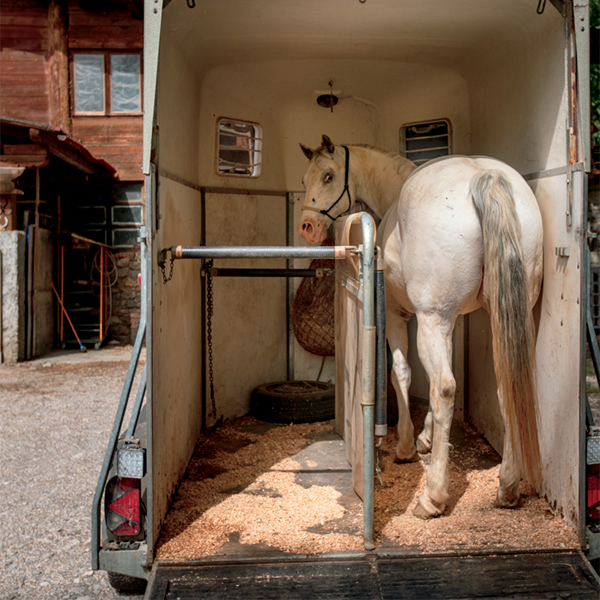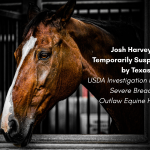As horse owners and riders gear up for spring shows, competitions, and rides most of our time and energy is spent focusing on the readiness of the equine itself. However, there is something most equestrians have parked near the barn that warrants a thorough inspection as well: the trailer.
After sitting for most of the winter, a quick check of trailer basics can save you time and trouble as you prepare to haul this spring.
A visual inspection of the trailer is a good place to start. Look at the tires- are there signs of dry rot? What does the tread look like? Brenden Thompson of Munford Tire recommends replacing the tires when there is 30-35% of the life percentage of the tire remaining. Parking on grass or dirt will shorten the life of the tire, so, if possible, park on concrete or gravel. It is a good idea to check the wheel bearings once a year, as these are “a vital part of keeping the wheel on the trailer,” Brenden says. Are they properly greased? According to horse husband and former Firestone Tire employee, Ryan Johnson, bearings may need to be repacked more frequently depending on how often and how far you haul. What about your lug nuts? Ryan states, “They shouldn’t be so tight that you can’t remove them with a 4-way.” Ensuring the lug nuts and studs are in good shape, “not too swollen or rounded off,” provides easier access when removing the tire, Brenden adds. Check the brakes- do the drums or shoes show signs of wear or have any broken components?
The trailer suspension system should also be visually inspected. Look for any worn out parts, cracks, or breaks in the leaf springs, for example. What about the floor- is it in good shape? Check for rotting wood (lift up rubber mats if you have them) and any fasteners that may be protruding from the floor. Also check the walls, roof, and door for any sharp objects or deteriorating metal, as these can be safety hazard lessons learned the hard way. Are your safety chains in good condition and installed properly? Ryan recommends oiling the door hinges and trailer ball coupler with a thin oil to ensure they move freely as well.
Once you’ve gone through your trailer, you’re now ready to expose your horse to it. Don’t surprise your horse with the trailer. Keeping it in your horse’s sight for several days before loading is ideal. Tie your horse to the trailer while grooming or tacking. Consider feeding outside of the trailer, or even placing the feed pan inside so your horse gets used to the idea of loading up. After exposing your horse to the trailer, you can move on to loading.
Even the calmest of equines can become stressed when it comes to loading and hauling. For a horse new to trailering, or one who just isn’t hauled often, anxiety can be an issue- for you and your equine. Take your time when it comes to loading; rushing and impatience will only complicate the situation. Lunging before loading can help alleviate nervousness.
Being a herd animal, your horse may load better if you can haul a pasture mate with it. If hauling more than one equine, loading the dominant horse first may help its subordinates decide to follow more easily. If hauling two full-size horses is not feasible, consider a donkey, goat, or mini horse to keep an anxious horse company in the trailer. If that’s not a possibility, at least keep horses in sight of each other when both loading and unloading. Assuring the equines can see each other the whole time should calm their nerves. When unloading, do the same; tie the first horse you unload nearby so the others can still see it as they are unloading if hauling multiple animals.
Once loaded, keep your horse loose or long tied with a quick release knot. Being able to move its feet helps keep the horse calm. Offer hay and water (if hauling for more than four hours), but no grain while traveling. If the horse is stressed, gut function can be affected. Grain can sit and ferment which increases the chances of a colic episode. When hauling, drive as though you have a cup of water sitting on your dash. Taking caution not to “spill” should create a smooth ride for your equine.
Finally, ensure you travel with safety necessities. Take along a well-equipped breakdown kit. This should include warning triangles, flares, a high visibility jacket, equine first aid kit, and a list of emergency numbers. Make sure your spare is in good condition. Ryan recommends traveling with two if possible. “Bringing along a good quality floor jack will make changing a tire faster and easier than a bottle or scissor jack,” he says. A trailer aid ramp in addition to the floor jack is ideal. Preparing in advance should take the stress out of loading and hauling this spring.










